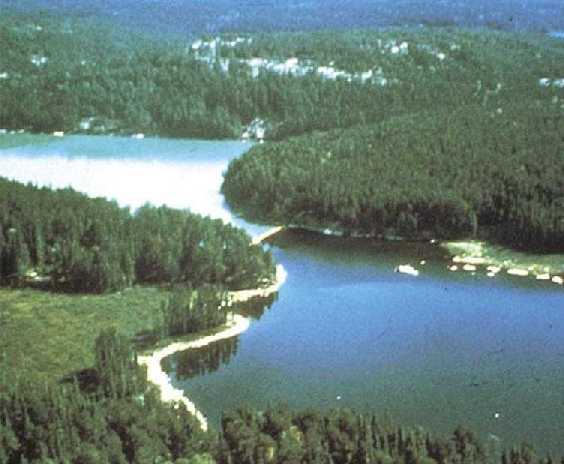 The experimental eutrophication of a lake.
The experimental eutrophication of a lake.
In 1974, the far basin of this lake was separated from the near basin by a plastic curtain and fertilized with inorganic sources of carbon, nitrogen, and phosphorus.
Within two months, the fertilized basin was covered with a cyanobacterial bloom, which appears white.
The near basin, which was treated with only carbon and nitrogen, remained unchanged.
In this case, phosphorus was the limiting nutrient, and its addition stimulated the explosive growth of cyanobacteria. 1